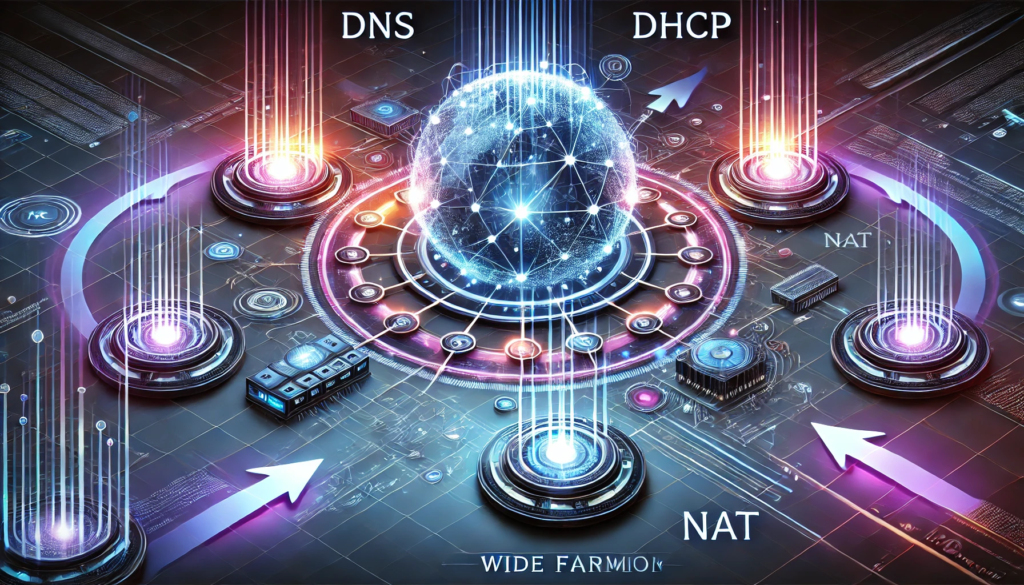Understanding DNS, DHCP, and NAT
The world of networking can be complex, but understanding key concepts like DNS, DHCP, and NAT is crucial for anyone working in IT or cybersecurity. These technologies play a fundamental role in how devices connect and communicate over the internet. In this article, we’ll break them down to make these concepts easier to grasp.

What is DNS?
DNS (Domain Name System) is like the internet’s phonebook. It translates human-readable domain names (e.g., www.google.com) into IP addresses (e.g., 172.217.10.46) that computers use to communicate.
How DNS Works:
- User Request: You type a URL into your browser.
- DNS Query: The request is sent to a DNS resolver.
- Resolution: The resolver contacts DNS servers to find the matching IP address.
- Response: The IP address is sent back, and your device connects to the website.
Why DNS is Important:
- Makes the internet user-friendly by eliminating the need to remember IP addresses.
- Supports scalability by managing domain-to-IP mappings.
What is DHCP?
DHCP (Dynamic Host Configuration Protocol) is a network management protocol that automatically assigns IP addresses and other configuration settings to devices on a network.
How DHCP Works:
- Device Request: A device connects to the network and sends a DHCP discovery message.
- DHCP Server Response: The server assigns an available IP address from a pool.
- Lease Time: The IP address is assigned for a specific period, after which it can be renewed.
Benefits of DHCP:
- Automates IP address management, reducing manual configuration errors.
- Supports dynamic environments where devices frequently join and leave the network.
What is NAT?
NAT (Network Address Translation) is a method used to map private IP addresses to a public IP address. This is commonly used in home and office networks to enable multiple devices to share a single public IP.
Types of NAT:
- Static NAT: Maps one private IP to one public IP.
- Dynamic NAT: Maps a private IP to a pool of public IPs.
- PAT (Port Address Translation): Maps multiple private IPs to a single public IP using different ports.
Why NAT is Useful:
- Conserves IPv4 addresses by allowing multiple devices to share one public IP.
- Adds a layer of security by masking private IP addresses from external networks.
How These Technologies Work Together
- DNS: Resolves domain names to IP addresses.
- DHCP: Automatically assigns private IP addresses to devices within the network.
- NAT: Translates these private IPs to a public IP for external communication.
Example Scenario:
When you connect your laptop to Wi-Fi and access a website:
- DHCP assigns your laptop an IP address.
- DNS translates the website’s domain name into an IP address.
- NAT maps your private IP to the network’s public IP, enabling you to browse the web.
Why These Concepts Matter
- DNS: Simplifies navigation on the internet.
- DHCP: Ensures efficient IP address management in dynamic networks.
- NAT: Enables secure and scalable internet access for multiple devices.
If you’ve found this article helpful and enjoy learning about Sysadmin and Ethical Hacking, consider supporting my work! Your contribution helps me create more free, high-quality content for the community and keeps the site ad-free. Every bit of support allows me to continue sharing knowledge and exploring the ever-evolving world of technology. If you’d like to support, you can Buy me a coffee. Thank you for your kindness and generosity!